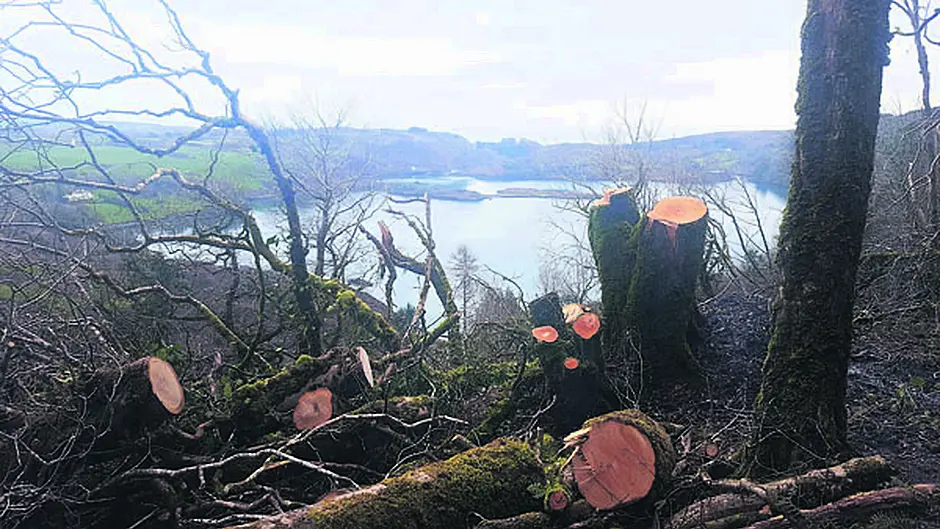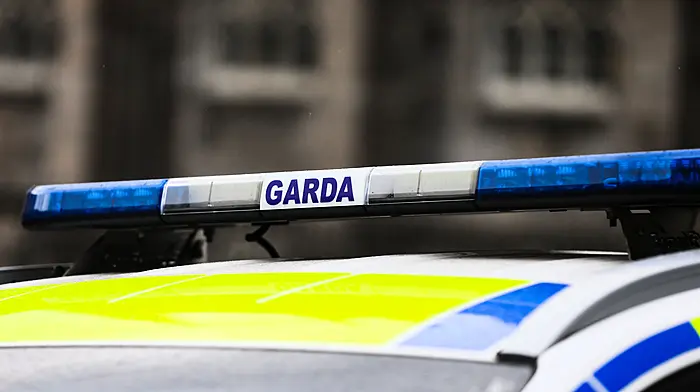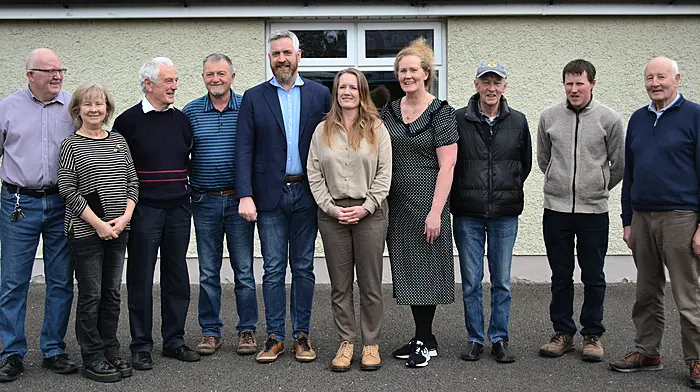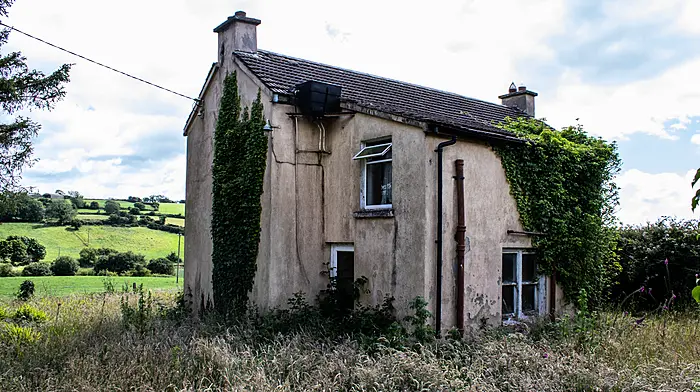Major work is ongoing to re-open Knockomagh Wood near Lough Hyne after the devastation of Storm Ophelia, writes Jackie Keogh
Major work is ongoing to re-open Knockomagh Wood near Lough Hyne after the devastation of Storm Ophelia, writes Jackie Keogh.
ONE of West Cork’s best loved nature reserves, Lough Hyne, took a battering during Storm Ophelia last October.
A particularly severe wind hit the side of the hill overlooking the lake and most of the conifers on the walk through Knockomagh Wood were snapped or knocked, leaving both the southern and northern walking trails looking like they were strewn with giant matchsticks.
The damage was so bad, so severe, and of such a risk to public health, that the wood was immediately closed to the public so that the National Parks and Wildlife Service, and Coillte, could set about repairing the damage done.
Although the name means ‘crooked hill,’ Knockomagh at 197m is, in fact, a mountain. This crooked hill, combined with the Lough Hyne Marine Reserve – which is a saltwater lake fed from the Atlantic Ocean – has been a hugely popular destination for people who enjoy walking, all kinds of water pursuits, or simply being in nature.
There has been much in the media of late of the Japanese practice of ‘forest bathing.’
It is said to lower the heart rate and blood pressure, boost the immune system, and promote an overall feeling of wellbeing.
But anyone who knows Lough Hyne and Knockomagh Wood knows that. And Terri Kearney, who is the manager of Skibbereen Heritage Centre and the author of Lough Hyne: From Prehistory to the Present and Lough Hyne: The Marine Researchers – in Pictures, probably knows that better than most.
Although both the southern and northern routes are still very much closed off to the public, Terri Kearney was recently given a tour of Knockomagh by Declan O’Donnell of the National Parks and Wildlife Service and she was able to share with us some images of the Trojan work the service is doing.
Terri said: ‘the unfortunate and unavoidable closure of the Knockomagh Hill walk at Lough Hyne has been a huge loss to both locals and tourists.
‘It’s only when an amenity like this is lost that we realise how much we’ve come to depend on it. It was, after all, one of the most popular walks in this area. But there is no doubt that it was highly dangerous after Storm Ophelia and had to be closed for health and safety reasons.’
For months – ever since Ophelia struck – Terri could, on her regular walks in the locality, hear the sounds of cutting and sawing reverberating around the lough.
‘It was hard to imagine the extent of the work involved until I got a guided tour of the site and saw it for myself,’ she said.
‘An incredible amount has been done to clear and cut the trees to open the path on the south side of the hill.’
Terri pointed out that most of the trees on Knockomagh Hill were planted by the landlord Wrixon-Beecher in the 19th century, which would account for the fact that some of them are truly enormous.
She said: ‘There is great credit due to the NPWS workers who have managed to cut and clear these mammoths without the benefit of heavy machinery.
‘To do all this work by hand is just extraordinary and I know that their efforts will be much appreciated when the path is finally open again and walkers on the hill will see the extent of what was involved for themselves.’
So far, the workers have almost reached the limits of the NPWS property – just below the summit of Knockomagh – and have only a few large trees to clear.
Declan O’Donnell, the district manager for the National Parks and Wildlife Service for the south west region, told The Southern Star: ‘We are in the process of ensuring that the public has access from the lower entrance through the deciduous woodlands to the viewing point at the summit.’
He said: ‘We have been working on this since October. It has been a huge undertaking because there were blockages of wind-blown trees on most of the paths.
He said: ‘the work was manual – two guys with chainsaws – working along a length of track that measures close to a kilometre.’
Declan confirmed that they expect to be finished their section of the southern trail by the middle of May and that Coillte – which owns the upper part of the path leading to the summit – will then finish the restoration of the trail.
However, he said there are no immediate plans to restore the northern trail because of the challenges in dealing with the wind-blown conifers, but he said it will be done in time.
Louise O’Reilly, the estates forester with Coillte and Mary O’Brien, who is the trails officer with Coillte, confirmed that they recently met with the NPWS.
Louise said: ‘There are plans in place to work with the NPWS to open up a walk in a safe environment. And we are hoping to have the walk leading to the summit opened by the June Bank Holiday weekend.’
Counting down to the days to when it will be safe to go back into the woods again, Terri said: ‘It is fantastic that locals and tourists will once again be able to climb to the summit of Knockomagh Hill and enjoy one of the best views in West Cork.’








